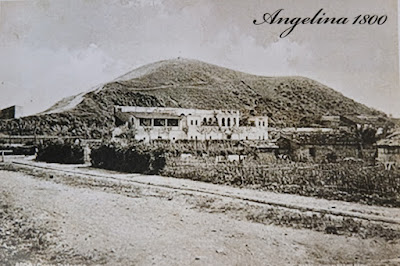All along the Viale Aventino, the grand avenue that borders the Aventine Hill on the southeast, we found good and great food. There were some we hadn’t researched but discovered by happenstance.
Rosso is one.
This was closer to the Colosseum and catered to tourists and locals alike. But they were efficient in their service and had a clever way of selecting out the undesirable element by putting ‘prenotato’ (reserved) signs on the outdoor tables just in case.
After a week of gorgeous French and Italian dining, sometimes you just gotta have a burger. Rosso didn’t disappoint. In fact, they also proudly displayed great haunches of beef and after visiting there for the third time, the management also offered to serve us a ‘lady steak’ if we were interested.
The burgers and onion rings were the only things we craved.
Sake Boutique was our first stop after arriving in Rome. While it didn’t offer sushi, it offered some small plates including katsu chicken, edamame and spicy chicken wings, all of which we devoured with a cold beer and several tokkuri of cheap hot sake.
We returned here too.
Across the wide avenue from Rosso is a really pretty decent French restaurant, La Renardière.
Any place that serves foie gras is just fine with me.
Because it is also located a little too close to the Colosseum, it is prone to unwitting tourists and those who would prey on them. We were seated outside against the window, on our second visit, for dinner. My handbag, sitting next to me on the ground, would have been whisked away but for the eagle eye of our waiter who chased the would-be thief off.
In the gloaming, I watched a woman take money out of the ATM behind Scott.
We figured it was a drug transaction because a guy was loitering around the area and the woman ended up at his car window a few minutes later.
We visited Baccio e i Grandini a couple of times for their Neapolitan pizza, a change from the flatter, crispier dough the Romans like to serve.
I think our favourite of all on the Avenue is Aventina. We stopped their on the way back from Baccio for a glass of wine. They were graciously accommodating, even though it really is a restaurant. There were elegantly dressed ladies and men sitting inside along the window. We were outside under the large umbrellas and served exceptional glasses of local Lazio wines.
The server was so nice and the menu we scanned looked so appetising (especially considering we’d just eaten) we booked a table for dinner later in the week.
Aventina, too, has quite a showcase of big haunches of beef. In addition, they also have a selection of cured hams from Spain, the famous Jamón Ibérico and Serrano. We were able to charm the young manager into serving us a taste of all four on offer, for our first course. (When I say “we,” I really mean Scott, speaking in Italian)
So, here we are at the end of the Roma saga. After writing about the food and the people along the Viale Aventino, I’m salivatin’. Again.
I have been reading Goethe's Italian Journey, of his time in Italy in the late 18th century. He spends half of the book on both Rome and Naples.
What made the biggest impression for me was that he would visit the same places over and over and over again until he really knew them. He couldn't just snap a photo to take with him. On occasion, he would sketch something or have one of his artist friends paint something so that he could take those home as reminders of his trip.
The food, the drink. The mosaics. The art. These are all things I must to return to so that I too can etch them into memory.
That brings me to the verdict that I definitely want to return to the Eternal City.



















































